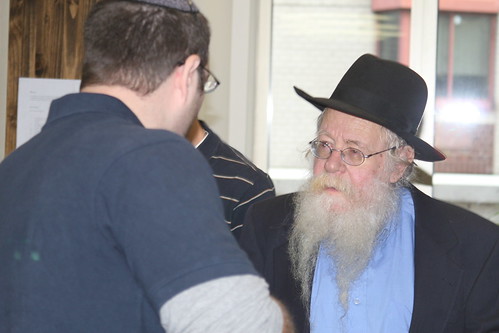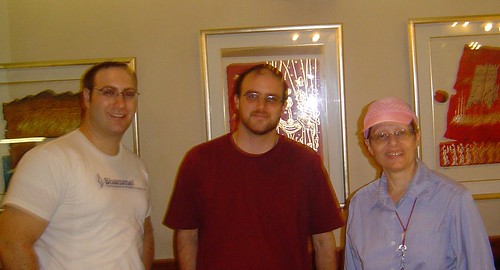On Sunday, we finally had nice weather (it had been chilly up until then (and raining when we arrived)), which coincided nicely with day #1 of our jaunting about Israel.
We took a train out to Tel-Aviv University (my wife's first ever train ride in Israel) to visit the Diaspora Museum, even though both of us had visited it multiple times prior to this visit. We went inside for about an hour and rushed around (since we had been there before). At the outset, the exhibits reminded me of other Jewish museums blending together. Then, in the museum's breaking up of various main diasporean communities, primarily chronologically, it seemed to me to be a refresher of Jewish history of the last two and a half millenia, spanning time and place.
We then departed the museum and hopped back on the train, to head up north to g
We arrived at the visitors' center of the winery, where we graciously were given water upon request, while we waited briefly for their daily 3pm tour in English. While waiting, we looked around at their wines and, more enticingly, at their various yummy-looking liqueurs, of which they had over a dozen. Then our tour began, with another couple besides us along with the tour guide.
We took the tour of the fourth-largest winery in Israel and it was simple and informative. We got to learn about contemporary methods of wine-making (as well as previous kinds). We found out that, although the main building and the grounds had been around since 1925, Binyamina Wines have only been around since 1992. At the end, we had a little wine tasting, with our tour guide showing us how to properly appreciate the wine when tasting it (he said it ought to involve all five se
 nses). Although this was my first ever winery visit, I have, to a minor degree, been interested in wines since having seen Sideways with my family several years back. Even though I had liked wine prior
nses). Although this was my first ever winery visit, I have, to a minor degree, been interested in wines since having seen Sideways with my family several years back. Even though I had liked wine priorto seeing that movie, it catalyzed me to appreciate the different types of wine and what about them makes them them.
After the wine tasting, the other couple on the tour had to head off, but we stayed for lunch/dinner and were waited on by our tour guide. For the first course, we were served bread along with over a half dozen different salads. Then came our main entrées: my wife got entrecôte and I got the chicken dish. The meat was definitely quite good and came along with potato slices and some really great-tasting green beans (some of the best I've ever had). Also my meal came with a
complimentary glass of wine, since we had gone on the tour. We thought we were finished, but, apparently, there was still dessert, which was an apple strudel - like thing (they also usually provide coffee, but neither of us are coffee drinkers). Following our dinner, we then purchased some wines and liqueurs and hopped back on the train to Modi'in.













